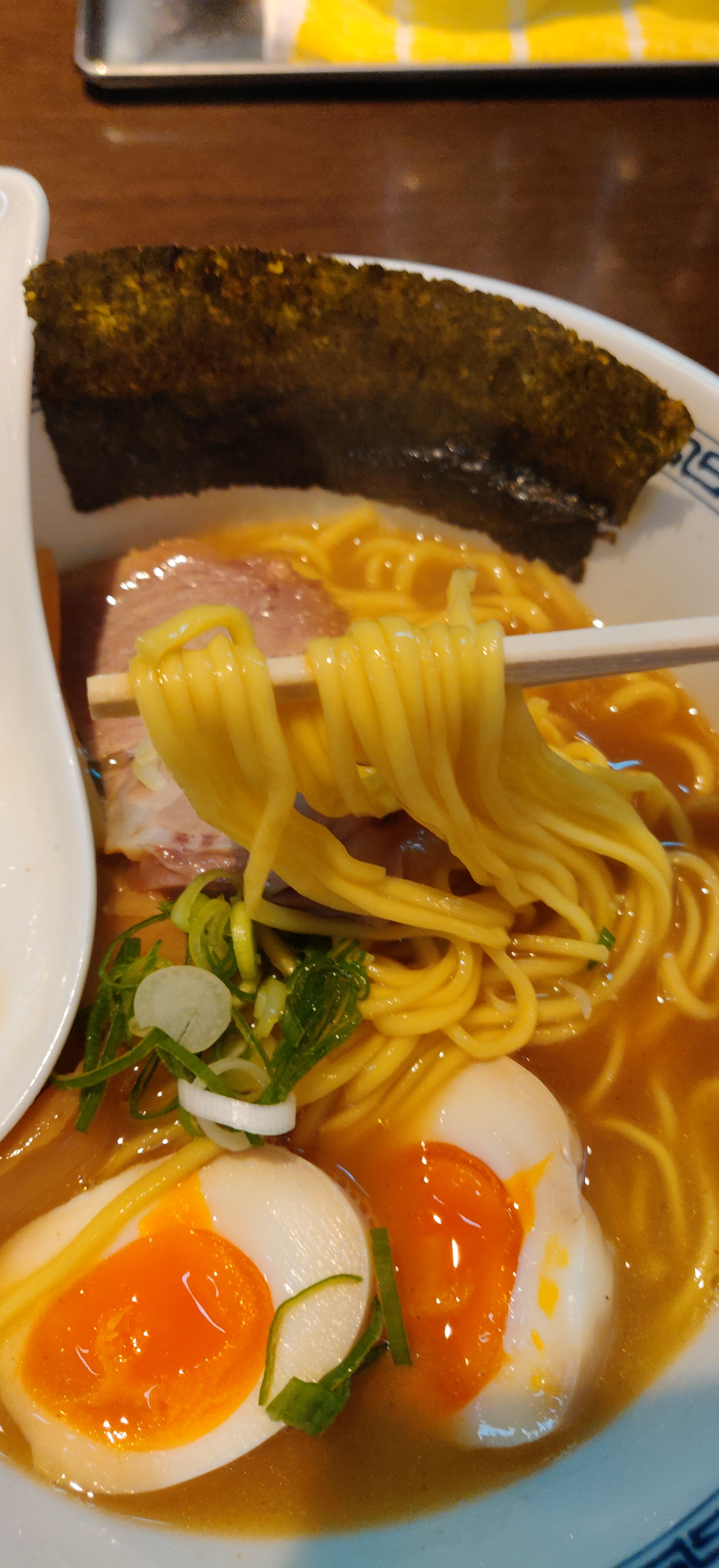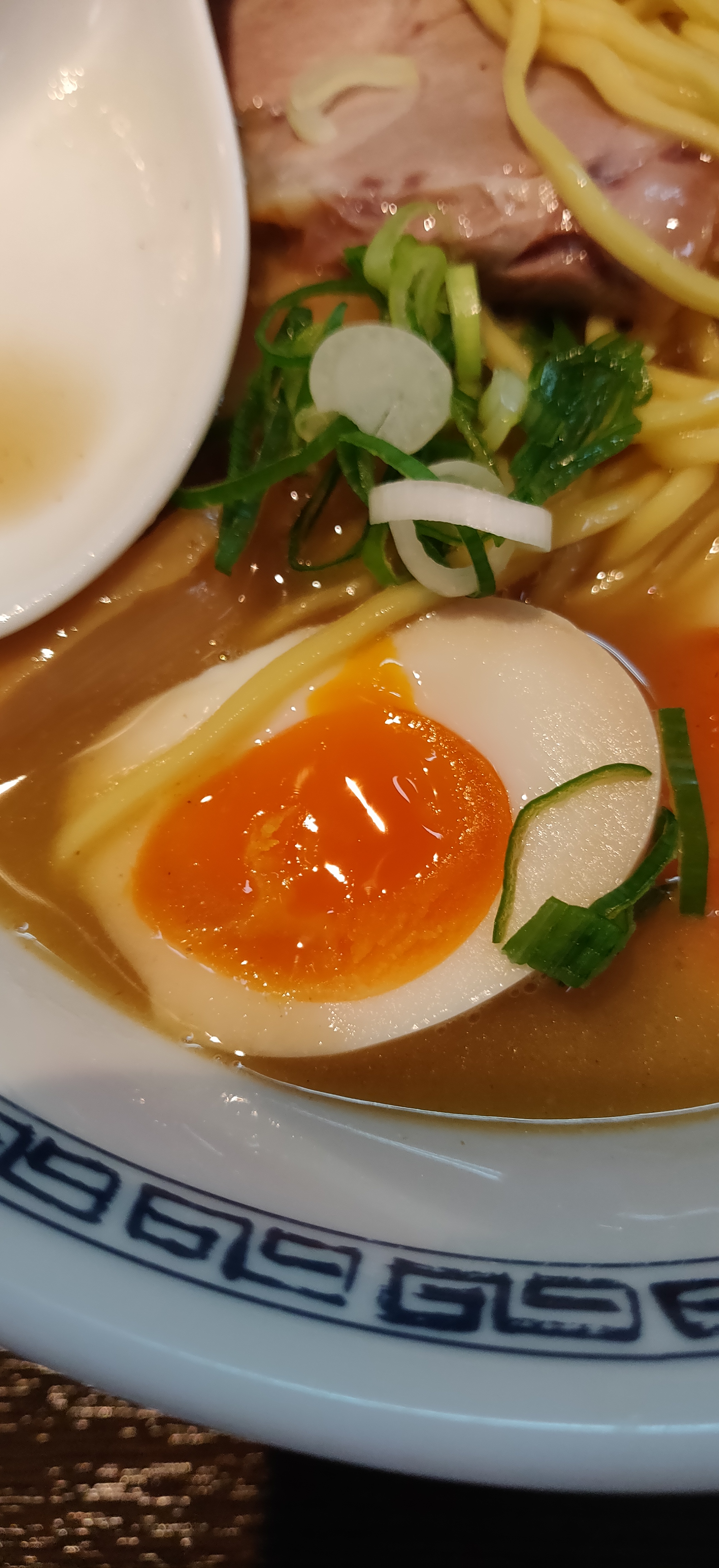Ramen Hayashi (はやし); Best Ramen in Shibuya?, Shibuya station
Probably one of the most famous ramen shops in Shibuya, Hayashi draws ramen lovers from all corners of the world to their small, quaint shop with a penchant for rules and formalities. While I hate to make excuses, Hayashi’s rules are the reason for the lack of photos in this review so apologies in advance if I didn’t get a lot of the photos you might expect for a restaurant review. Anyways, Ramen Hayashi is located just a short distance from the Keio Inokashira line Shibuya station. Hayashi is open Monday to Saturday from 11:30 to 15:30. As you can see from the photo, there is a short line in front of the store that is about 8 people deep, and a sign instructs you to wait on the other side of the cafe if it gets longer than that (which it will). People will start lining up by around 11:00 on weekdays and about 10:45 on Saturdays, but don’t try coming any earlier or the owner will come out and tell you to leave and come back later, one of his many rules.
Once you get to the front of the line, purchase your ticket at the machine and take your seat when it opens. Good thing about Hayashi is that there are only three things on the menu and its all just a variation of their one ramen. From right to left is the Ramen, Ajitama Ramen (with soft boiled egg), and the Yakibuta Ramen (extra roast, pork char siu). I would have liked to take a picture of the ticket machine, but as the line was moving along, I got told to quickly take my seat so my photo was blurry. Apologies, but please try and compare my translation of the menu located outside with the ticket machine inside. Once you purchase your ticket and take your seat, put the ticket down on the counter and the chef’s wife will call out your order. 10 people fit in their small little shop and while there is a coat rack on the back wall, do not put your bag on the hook, or the owner will give you a stern warning (again another rule). The chef stands toward the entrance of the shop to cook the ramen, but don’t try and take a photo of him or the kitchen. Photos taken at the seat and of the ramen is completely ok however, so snap that instagram photo of your ramen when you receive your bowl. However, another rule for you, don’t take too long finishing your ramen once you get it. As you can see from my own photos, I snapped quite a bit while eating, but apparently the chef wasn’t fond of the guy next to me who was snapping way more photos than one should need and asked him to put his phone away. The rules are understandable to be quite honest and I try my best not to take too much time eating or snapping photos no matter which ramen shop I’m at, but I’m sure those who don’t speak Japanese might be taken aback being scolded at in a foreign language so hopefully you remember these rules when dining at Hayashi.
I opted for the Ajitama Ramen with that beautiful soft boiled egg. First thing I noticed was how milky the soup was. I’m not particularly a fan of W soup, or double soup which combines a fish based broth together with a thick pork bone broth, and while this soup looked quite thick and dense, it was actually quite light. Thin, Chinese style yellow noodles fill the bowl and is topped with a slice of their roasted char siu, home made menma bamboo shoots, a spoonful of chopped green onions, and a sheet of dried seaweed. The ramen reflected the chef’s attitude and demeanor in the shop, simple and straight to the point. Soup here is fantastic and is definitely the highlight of the bowl. It really takes the extremes of both the fish and pork broth combining them to new heights. You get the deep umami flavor from the fish while also being able to enjoy the full bodied, thickness of the pork bone broth. Despite all of the intense flavors coming together in to the soup, its actually quite mellow and incredibly delicious. The shoyu tare seasoning rounds out any rough edges of the two broths and acts as the glue that makes their union harmonious. A bit of yuzu citrus helps cut through a bit of the fattiness of the soup and is a great accent to the entire bowl. Before I knew it, I was grasping the bottom of the bowl and getting every last drop of this soup in to my mouth. It was that good.
The noodles here are made by Mikawaya Seimen, a popular noodle factory on the northwest side of Tokyo. It’s quite popular among ramen fanatics and will sometimes draw fans of these noodles to ramen shops around Tokyo just to see how they pair with different soups (crazy, I know). They are quite high in Kansui, or alkaline, as reflected by that bright yellow hue. Noodles are thin, flat, and cooked al dente so it gave a nice bite when you chewed through them. The komugiko, or flour flavor, isn’t as pronounced for Hayashi’s special made noodles, not interfering with the flavors of the broth and acting as the perfect carrying vessel for their delicious soup. The yakibuta, or pork char siu is really tender and has a bit of char around the edges for that ever wonderful maillard reaction. It’s the perfect balance of fat and meat helping retain its shape despite its long simmer and melts only in your mouth. I didn’t end up ordering the bowl with extra char siu, but having tasted just my one slice, I would say there isn’t enough soup and noodles to eat along with the char siu to justify getting the extra portion. Hayashi doesn’t offer extra noodles with their ramen so it might be a dilemma as you want a balanced bowl, but want more food. Decision is yours, but I enjoyed the balance of the one slice.
The menma bamboo shoots are flavored in house and has a bit of that fermented twang as you eat it with your noodles and soup. Cut wise, the bamboo shoots are rectangular and a bit wide. However, the fibers go vertically so best to go one bite as it might be difficult to bite through. Soft boiled egg was cooked to perfection and had the great creamy consistency that mixed in to the soup to give it a flavor change mid meal. The green onions provided that fresh crunch and much needed veggies in the ramen. Low point was the dried seaweed, but then again, I typically hate dried seaweed in a majority of my ramen so nothing different there.
Overall I can understand why this is the highest ranked ramen shop near Shibuya station. Hayashi does an amazing job of refining the W broth and makes it worth going just to have their amazing soup. While it is only a short distance from Shibuya station, it is only open during lunch so be sure not to show up past 15:00. It is, however, a perfect place to get your ramen fill before exploring Shibuya during the day so I definitely recommend coming for lunch. As always, I love hearing from my readers so be sure to let me know what you thought of the ramen on my instagram, twitter, facebook, or in the comment section below. Hope you enjoy it as much as I did!






